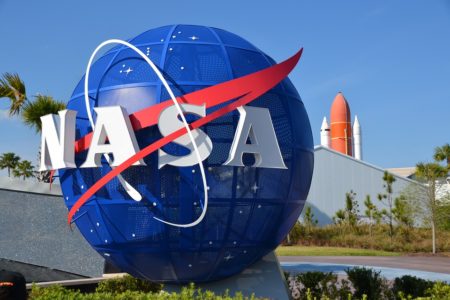September 19, 2019 – The Trump administration has tasked NASA to return to the surface of the Moon to stay with the first touchdown happening in 2024. To describe this as a flight of fancy would be an understatement. It’s not that the agency cannot get back to the Moon by that date, it just can’t do it with an insufficient budget, and with the due diligence necessary to ensure no catastrophic results.
The current timeline for the project designated Artemis, (in Greek mythology the twin of Apollo which seems apt) is being driven by politics, not by carefully planned scheduling with built-in safety considerations to deal with the many risks associated with accelerated scheduling.
The evidence is transparently there for all to see and yet it is being ignored.
- There is no rocket at present ready to send astronauts back to the Moon. The Space Launch System (SLS) is well over budget and has yet to be test flown in any iteration. Why it is even being built defies logic?
- The budget to build the SLS has ballooned with Boeing, the major contractor, demonstrating a woeful lack in its ability to deliver on time having missed all scheduled target completion dates. A June 2019 report noted that the contractor was underreporting development cost growth since 2017 which should be a cautionary tale and red flag for the project.
- Why SLS was needed when the United States already had the Saturn V experience and technology well-perfected, defies logic. Why not just build more Saturn Vs with added technological enhancements and improvements to meet the new mission requirements? After all NASA plans to use the solid-fuel booster rockets it developed for the Shuttle Program, as well as its rocket motors on the SLS.
- The Artemis plan involves deploying a space station in orbit around the Moon, the Lunar Gateway, which currently is still lacking a final design specification let alone detailed costing which of course will be understated as in almost every NASA project.
- There is a lack of ground infrastructure to support a return to the Moon mission. Nothing like the Apollo Program launch centre and vehicle assembly and transport infrastructure have received approved spending.
- The command module for the Artemis mission is Orion (also over budget) which was resurrected from a cancelled space initiative under the George W. Bush administration. It has recently been completed. Its service module or ESM is contracted out to the European Space Agency (ESA) which recently delivered the first iteration for testing and integration with Orion. ESM is a mission-critical component supplying Orion with its electricity, propulsion, thermal control, and life support systems. It has never been space tested or flown mated to Orion. In an earlier launch of Orion without the ESM attached one wonders what actual systems tests were done.
- The return to the Moon mission requirements includes a lunar lander, a souped-up version of the Lunar Excursion Module (LEM) of Apollo. The lander has yet to be designed although NASA may reach out to Blue Origin who recently revealed its designs for a lunar landing module it calls Blue Moon. How much more design work will be needed and at what cost to make the lander a reality?
- Under the politically appointed head of NASA, Jim Bridenstine, a former congressman, NASA recently reassigned two of its top executives in the human space exploration program. Why this occurred is highly speculative, but my guess is that these senior NASA folk were questioning the administration’s Artemis timelines. When you consider how NASA administrators ignored good advice in the past leading to tragedy, one wonders how Artemis will avoid it in the future.
- A recent Government Accounting Office report reveals numerous NASA and contractor mistakes that are endemic within the Agency which could likely repeat causing something to break whether it is the technology, the budget, or the timelines for Artemis. It likely it could be happening in all three categories.
- And finally, we have commercial competitors who have enjoyed a healthy assist from NASA in building their space businesses, and who have complementary and competing technologies that could be used by or replace the Artemis Program. NASA has been using commercial partners going back to Apollo and there is a concern that an overreliance on them could impede success. Consider the SLS boondoggle described in previous points and the concern becomes very real. Some within the Agency describe the pressure being put on them to use commercial contractors rather than NASA in-house knowhow for Artemis. And then there is alternatives to Artemis that could be delivered by commercial partners such as: launcher alternatives like the SpaceX Starship, or Blue Origin, New Glenn rocket, both capable of replacing SLS. A Starship mission would dispense with the need for the Lunar Gateway or lunar landing module. A Blue Origin mission would use New Glenn instead of SLS but would still require the Gateway and its Blue Moon lander to complete the mission. And for a lunar habitat there is Bigelow Aerospace which has tested its inflatable habitats currently attached to the International Space Station and could supply a surface habitat version for prolonged stays on the Moon. Could any or all of these be better alternatives to what NASA’s Artemis current planning?
In the latest reveal, Kenneth Bowersox, acting Associate Administrator for Human Exploration at NASA, the Bridenstine appointed replacement for the two former human spaceflight executives, when speaking to a congressional subcommittee yesterday stated that he wouldn’t bet on the aggressive 2024 timeline knowing the technical challenges that remain to be overcome. Will Bridenstine now fire Bowersox for being truthful about this politically imposed deadline that NASA has been asked to meet?








